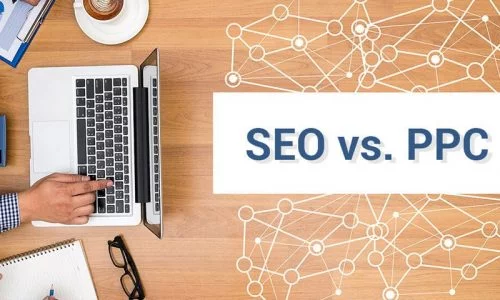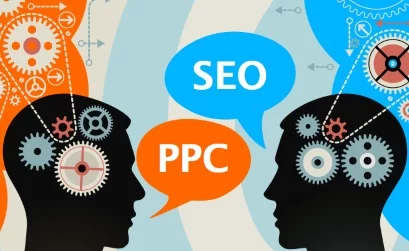Are all the works on the new website completed and ready to go live? Is it time to revise an already launched resource? At some point in the life of every page, the owner has to ask a question:
"How to attract the maximum number of users?"
There are many websites on the Internet that offer similar services or products. So how do you get customers to come to you?
- Contextual advertising (direct)
- SEO (Search Engine Optimization)
Contextual advertising - is the use of advertising in search engines. They are displayed to the user depending on the request. In this case, you pay only on the website (pay per click).
SEO - is a set of measures aimed at external and internal optimization of a resource to increase its position in emissions, improve conversion and ease of use.
The top search results contain key phrases related to your company's services or products.
Every entrepreneur has a question: "Which is better, SEO or contextual advertising?":
- SEO - after some time of optimization, the site is displayed at the top of the search results for key queries and remains there.
- Contextual advertising - a website comes first if you are willing to pay for it.
Both methods have their advantages and disadvantages. Context is often used to increase sales today, but as soon as the budget runs out, Google Ads stops working. If the average check per customer is low, the income will be questionable.
Another point to keep in mind:
A click is not a purchase.

Contextual advertising cannot ensure a purchase. If the product does not meet expectations, is difficult to find, and even more difficult to purchase (the buyer has to perform an excessive number of actions), then you pay for the transition, do not get sales, and go into the red.
Therefore, optimization is always necessary.
Before launching an advertising campaign, your website should:
- Meet all the requirements of Google
- Be ready to receive users during the working day
- Must contain unique texts
- Be closely integrated with social media
- Have an analytical system
- Answer your top search queries in the most complete way
- Invest in SEO constantly, as you are buying not a temporary, but a permanent result
This method of promotion has other advantages:
- Customer confidence. You are perceived not as an advertisement, but as a personal choice. Many users don't trust advertising and prefer to find products themselves.
- Coverage. You will get potential customers regardless of the target audience and region. Promotion in one position is growing everywhere.
- Cost. If we summarize the cost of all the work and divide it by the number of recipients involved, it will be much cheaper than contextual promotion.
What is the cost of such a service?
It takes 2 to 6 months for SEO to work, depending on the competitiveness of programs and resources.
Such a service cannot be cheap, as it takes the company to a completely new, previously unavailable level of sales. Yes, these are sales, not regular visits.

To do this, you need to do the following work:
- Optimization at the zero stage. If the project is under development, it is better to prepare a good technical specification and immediately introduce amendments and improvements that will help you become the best.
- In-depth audit. Start by working on bugs. They can be both technical (programming-related) and informative (everything related to content and design). To increase conversion and ranking, these shortcomings must be eliminated.
- Usability audit. It checks how comfortable the site is for visitors. You have to find strengths and weaknesses, analyze the competition, and take effective action.
- Links. At this stage, backlinks are analyzed and a systematic list of blogs, portals, directories, etc. is developed to improve the quality of the link mass. Then the links are published in articles, news blogs, social networks, and workplaces.
- Final check. Do you have few website visitors? Perhaps Google has blocked you because of an incorrect promotion technique or a code error.
Only such a comprehensive approach will help you not to buy every customer, but to automatically increase the flow of targeted recipients without constant intervention and investment.









